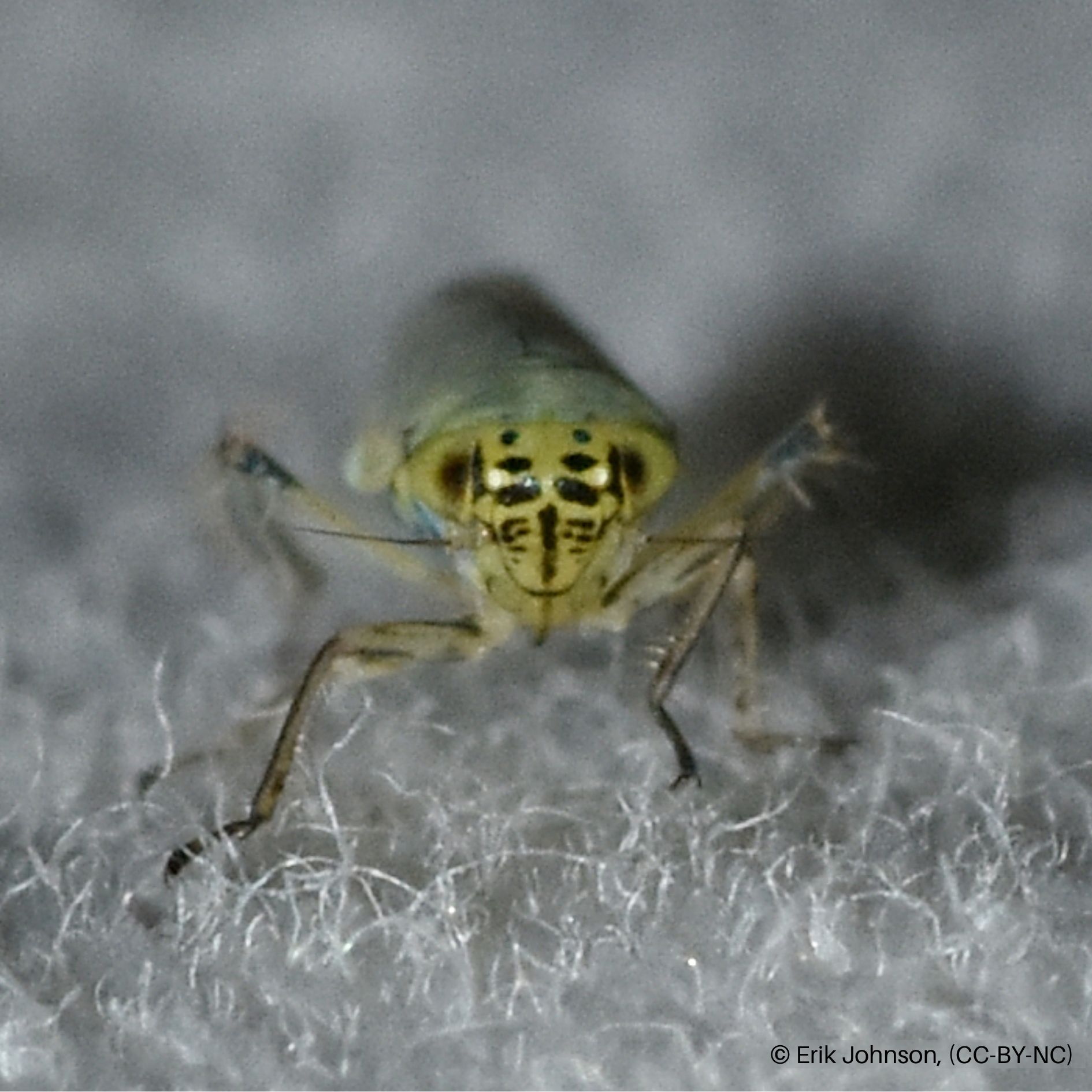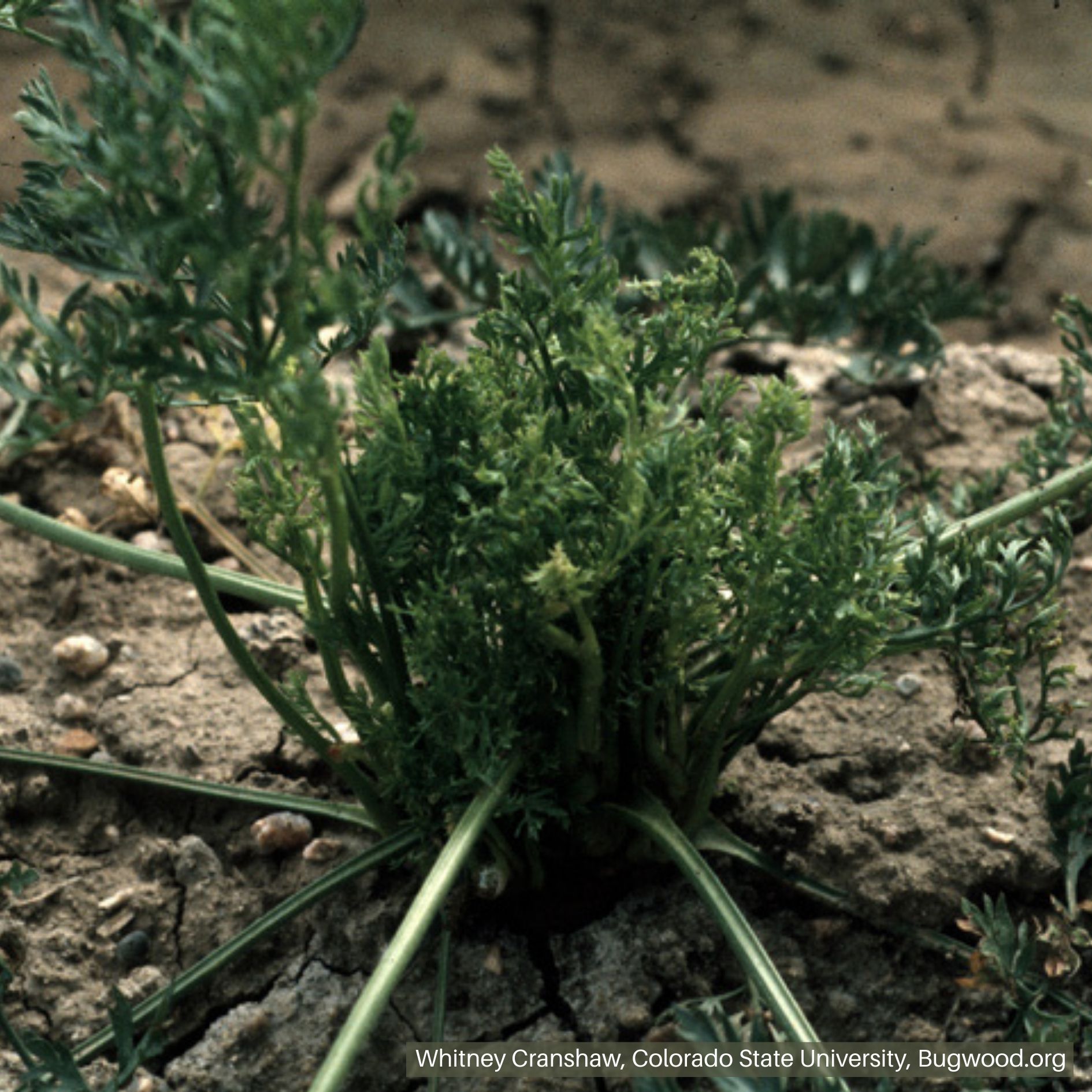Aster Leafhopper
 Aster Leafhopper Nymph and Adult
Aster Leafhopper Nymph and Adult
 Characteristic Six Spots on Top of Aster Leafhopper Heads
Characteristic Six Spots on Top of Aster Leafhopper Heads
HOSTS
- Carrots
- Root crops
- Leafy Greens
- Potato
OVERVIEW
Aster leafhoppers (Macrosteles quadrilineatus) are known to vector aster yellows disease when feeding on plants. Aster yellows disease can affect many plant varieties including vegetable and ornamental plants. Once a plant is infected with aster yellows, there is no treatment, and should be removed.DESCRIPTION
Adults have gray to green wedge-shaped bodies and six dark-colored spots on the top of their heads. Nymphs look very similar to adults; except they are wingless and often lighter colored.
BIOLOGY
Egg | Nymph | Adult
Adult leafhoppers lay their eggs in plant tissue. After hatching, nymphs will go through five nymphal stages before becoming adults.
Aster leafhoppers obtain aster yellows disease by feeding on an infected plant. After an incubation period of up to 18 days, the disease becomes transmissible and can be spread whenever the leafhopper feeds on uninfected plants.
SYMPTOMS
Adults and nymphs feed with piercing-sucking mouthparts which can cause white-flecked injury (stippling) on the foliage. With heavy feeding, leaves may show scorching (browning) at the feeding sites.
Aster leafhoppers can spread aster yellows disease which has a variety of symptoms depending on the host plant. Common symptoms include stunted or disfigured growth, discolored leaves, and the growth of multiple small stems.
GENERAL MANAGEMENT
- Row covers can be effective in excluding leafhoppers from crops.
- Weeds should be removed as they can serve as alternative hosts for the leafhoppers.
INSECTICIDES
Coming Soon



